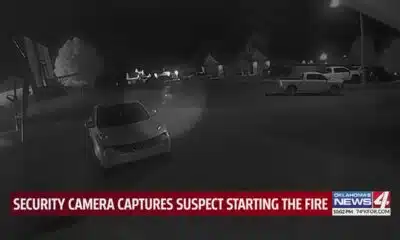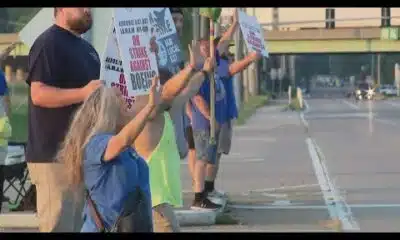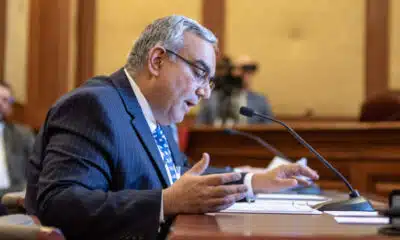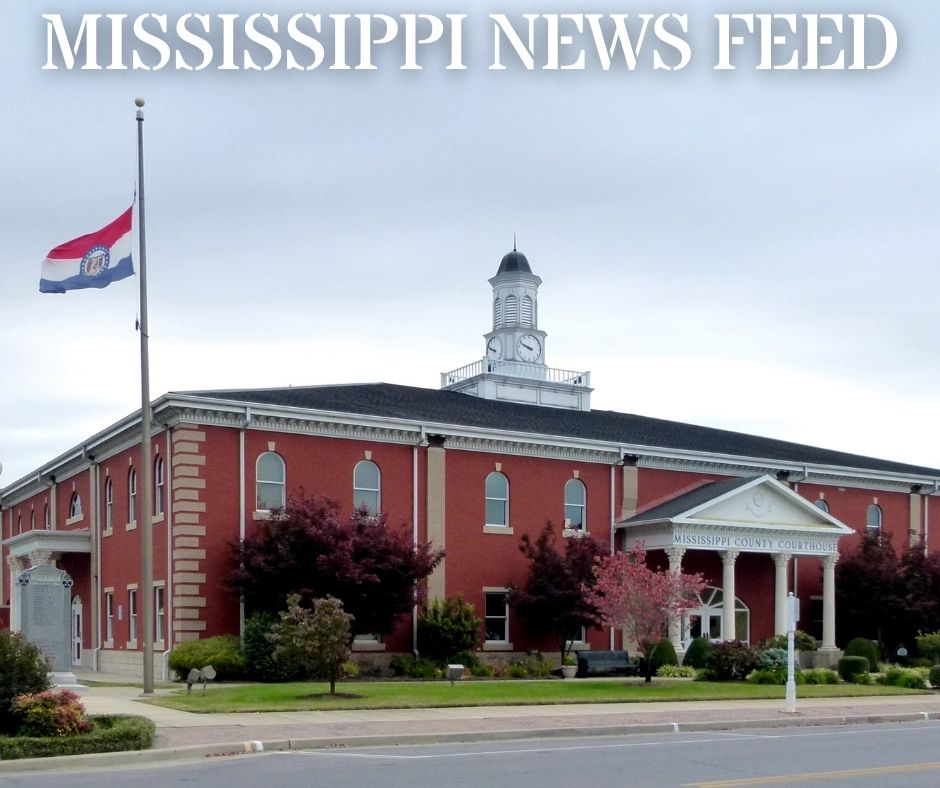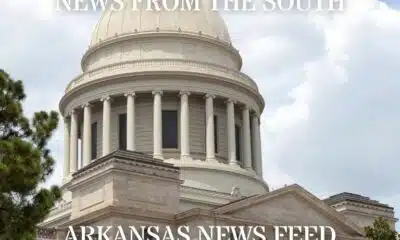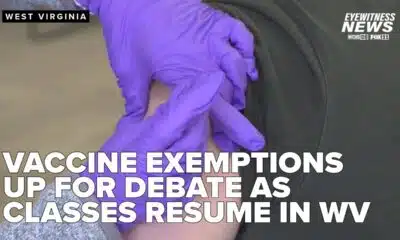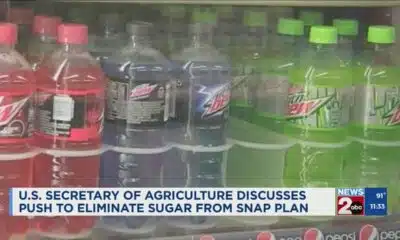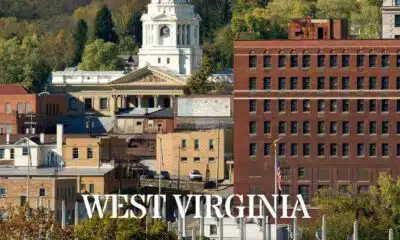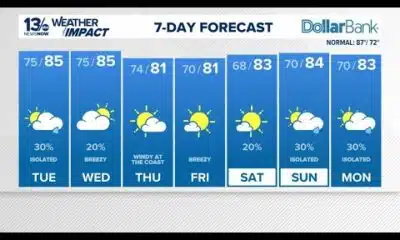News from the South - West Virginia News Feed
States’ nuclear energy growth needs federal action to follow Trump’s vocal support
by Allison Prang, West Virginia Watch
May 3, 2025
WASHINGTON — President Donald Trump and his team have signaled a strong interest in continuing to strengthen federal support for nuclear power, an energy source Democratic states are increasingly open to expanding.
The administration’s loudly pro-nuclear position creates a rare point of overlap between Trump and his predecessor, Joe Biden, whose signature legislation funded hundreds of millions in tax credits for low-carbon energy sources, including nuclear power.
Trump during his first roughly three months in office issued multiple executive orders mentioning nuclear energy, casting his broad energy strategy as a way to expand the country’s power resources and shore up its security. State lawmakers are also pushing their own policy moves, sometimes just in an effort to set themselves up to embrace nuclear power at some point in the future.
“There are a lot of really positive signals,” said Rowen Price, senior policy adviser for nuclear energy at Third Way, a centrist policy think tank.
But Price said she’s concerned that support for nuclear power could be swept up in bigger political fights, such as many congressional Republicans’ goal of axing clean-energy tax credits in Democrats’ 2022 Inflation Reduction Act. The administration’s broad cuts to the federal workforce could also eventually hurt the government’s nuclear ambitions, she added.
The promise of a nuclear resurgence in the United States isn’t a new goal for the industry or its backers in Washington, D.C., but how successful efforts to expand nuclear power generation will be in the U.S. — a metric that hasn’t budged from around 20% in decades — remains to be seen.
Americans’ support for the energy source, meanwhile, is just short of its record high, a recent Gallup Poll found. And more blue states have also started to embrace nuclear power, which has traditionally been more favored by Republicans, to reach climate goals and grow electricity capacity amid anticipated increases in demand.
But even as interest in states grows, the cost of building nuclear infrastructure remains an impediment only the federal government is positioned to help scale.
‘Renaissance of nuclear’
Energy Secretary Chris Wright in April talked about the administration’s desire to elevate nuclear power by making it easier to test reactors, delivering fuel to next-generation nuclear firms and utilizing the department’s Loan Programs Office to help bring nuclear power projects online.
“We would like to see a renaissance of nuclear,” Wright said at the news outlet Semafor’s World Economy Summit in Washington. “The conditions are there and the administration is going to do everything we can to lean in to help commercial businesses and customers launch nuclear.”
The Palisades Nuclear Plant in Covert, Michigan. (U.S. Nuclear Regulatory Commission photo)
Wright said he wants the department to help launch 10 to 20 new nuclear reactors to get the industry moving again and to bring down costs. The department’s loan office could make debt investments alongside large-scale data center companies that use massive amounts of power to build nuclear projects and then exit those deals after the projects are built, allowing the office to recycle that funding, he said.
The department recently announced that it approved a third loan disbursement to reopen the Palisades Nuclear Plant in Covert, Michigan, which Holtec has been working on doing for the last few years.
Last month, the department said it was reopening $900 million in funding to help companies working on small modular reactors after changing some of the Biden administration’s guidance on the program.
Federal workforce cuts
Third Way’s Price noted that a portion of staffers at the Nuclear Regulatory Commission — which she described as already “tightly constrained” — are eligible for retirement either now or in the next five years.
Workforce cuts at the Energy Department and elsewhere could also hurt efforts to grow the nuclear power sector, she said.
“Frankly, all of the verbal support from this administration for nuclear only matters if they’re actually going to put forward and implement policies that support it,” Price said. “We need to make sure that they do it.”
An Energy Department spokesperson said in an email that it “is conducting a department-wide review to ensure all activities follow the law, comply with applicable court orders and align with the Trump administration’s priorities.”
The agency said it didn’t have a final count on how many staffers have left the department through its resignation program, but noted that it doesn’t necessarily approve all requests. The department didn’t comment on how many staffers focused on nuclear energy have been laid off.
Nuclear programs were among those affected by the Trump administration’s pausing of federal programs and funding, said David Brown, senior vice president of federal government affairs and public policy at Constellation Energy, which runs the biggest fleet of nuclear plants in the country. But Brown said that even so, the industry is coming out on top.
“I think what we are seeing is that as they work through their various review(s) of programs that they’re greenlighting the nuclear stuff,” Brown said.
Federal support crucial, but politics tricky
Lawmakers on Capitol Hill could also change the outcome for industry, for better or worse.
Wright, in his remarks last month, said he hopes Congress will take action to help expand nuclear energy, and said lawmakers could do so in the budget reconciliation package on which the U.S. House has started to work.
Republican House members have not yet released text of the sections of the package that will deal with energy policy. Wright said support for nuclear power could be included in the reconciliation package, but some advocates are also worried that the package, or the annual appropriations bills, are the exact kind of political battles that efforts to support nuclear power, like the tax credits, could get tied up in.
Some state lawmakers point to financial support from the federal government as essential for the industry to grow, even if states make their own headway to build support for nuclear power.
Colorado state Rep. Alex Valdez, a Democrat who sponsored a bill signed into law this session to include nuclear in the state’s definition of clean energy, said he hopes the administration follows through on its admiration of nuclear power with funding for states.
“Generally, states do not have the financial resources the federal government does,” Valdez said. “It’s going to be the federal government that puts their investments behind these things, and that’s what’s going to enable states as a whole to be able to move forward on them.”
West Virginia Watch is part of States Newsroom, a nonprofit news network supported by grants and a coalition of donors as a 501c(3) public charity. West Virginia Watch maintains editorial independence. Contact Editor Leann Ray for questions: info@westvirginiawatch.com.
The post States’ nuclear energy growth needs federal action to follow Trump’s vocal support appeared first on westvirginiawatch.com
Note: The following A.I. based commentary is not part of the original article, reproduced above, but is offered in the hopes that it will promote greater media literacy and critical thinking, by making any potential bias more visible to the reader –Staff Editor.
Political Bias Rating: Centrist
The content presents a relatively balanced view on nuclear energy, highlighting the bipartisan support for its growth, with mentions of both Republican and Democratic policymakers advocating for it. The article presents a range of perspectives, from Trump’s administration’s focus on nuclear power to Biden’s support for low-carbon energy, including nuclear. Additionally, it touches on concerns about federal workforce cuts and political battles that could impact the growth of the nuclear sector. While the article covers both sides of the political spectrum and does not overtly favor one viewpoint, the tone remains generally neutral with an emphasis on the technical and policy aspects of nuclear energy expansion rather than political divisions.
News from the South - West Virginia News Feed
WEEKEND WEATHER AUG 24TH
SUMMARY: WEEKEND WEATHER AUG 24TH: Today was a pleasant, typical summer day with temperatures reaching 80° in Beckley. A cold front is moving through tonight, bringing increasingly breezy winds and cooler air, dropping temps to the high 50s overnight and into the 40s early next week. Rain chances remain very low, with mainly dry conditions expected tonight and tomorrow. Monday will feature a mix of clouds and sun with highs in the high 60s to low 70s—cooler than normal. Low humidity and comfortable weather will continue through the week, making it a great time to enjoy the outdoors as fall arrives early.
FOLLOW US ON FACEBOOK AND TWITTER:
https://facebook.com/WOAYNewsWatch
https://twitter.com/WOAYNewsWatch
News from the South - West Virginia News Feed
Feds direct states to check immigration status of their Medicaid enrollees
by Anna Claire Vollers, West Virginia Watch
August 22, 2025
This week, the Trump administration’s Centers for Medicare & Medicaid Services (CMS) announced an effort to check the immigration status of people who get their health insurance through Medicaid and the Children’s Health Insurance Program.
Medicaid is the public health insurance program for people with low incomes that’s jointly funded by states and the federal government. For families that earn too much to qualify for Medicaid but not enough to afford private insurance, CHIP is a public program that provides low-cost health coverage for their children.
The feds will begin sending states monthly enrollment reports that identify people with Medicaid or CHIP whose immigration or citizenship status can’t be confirmed through federal databases. States are then responsible for verifying the citizenship or immigration status of individuals in those reports. States are expected to take “appropriate actions when necessary, including adjusting coverage or enforcing non-citizen eligibility rules,” according to a CMS press release.
“We are tightening oversight of enrollment to safeguard taxpayer dollars and guarantee that these vital programs serve only those who are truly eligible under the law,” Robert F. Kennedy Jr., who oversees CMS as secretary of the U.S. Department of Health and Human Services, said in a press release announcing the new program.
As of April, roughly 71 million adults and children nationwide have Medicaid coverage, while another 7 million children have insurance through CHIP. Immigrants under age 65 are less likely to be covered by Medicaid than U.S.-born citizens, according to an analysis from health research organization KFF.
Immigrants who are in the country illegally aren’t eligible for federally funded Medicaid and CHIP. Only citizens and certain lawfully present immigrants — green card holders and refugees, for example — can qualify.
But some states have chosen to expand Medicaid coverage for immigrants with their own funds. Twenty-three states offer pregnancy-related care regardless of citizenship or immigration status, according to KFF. Fourteen states provide coverage for children in low-income families regardless of immigration status, while seven states offer coverage to some adults regardless of status.
The tax and spending package President Donald Trump last month cuts federal spending on Medicaid by more than $1 trillion, leaving states to either make up the difference with their own funds or reduce coverage. But the new law also includes restrictions on coverage for certain immigrants, including stripping eligibility from refugees and asylum-seekers.
Stateline reporter Anna Claire Vollers can be reached at avollers@stateline.org.
West Virginia Watch is part of States Newsroom, a nonprofit news network supported by grants and a coalition of donors as a 501c(3) public charity. West Virginia Watch maintains editorial independence. Contact Editor Leann Ray for questions: info@westvirginiawatch.com.
The post Feds direct states to check immigration status of their Medicaid enrollees appeared first on westvirginiawatch.com
Note: The following A.I. based commentary is not part of the original article, reproduced above, but is offered in the hopes that it will promote greater media literacy and critical thinking, by making any potential bias more visible to the reader –Staff Editor.
Political Bias Rating: Centrist
This article provides a balanced overview of recent policy changes to Medicaid and CHIP enrollment verification tied to immigration status. It presents facts, official statements, and statistics without emotive language or partisan framing. Both the rationale behind the policy, such as safeguarding taxpayer dollars, and the impact on immigrants are covered objectively. The inclusion of context on eligibility rules and varying state approaches reinforces a neutral, informative tone, typical of centrist reporting seeking to inform rather than advocate.
News from the South - West Virginia News Feed
Students go back to school in West Virginia, but same education debates rage
by Andrew Donaldson, West Virginia Watch
August 21, 2025
While students across the Mountain State are going back to school to advance to the next grade, many parents and most of the politicians seemed to be held back in the same spots with the same education arguments of the last few years.
News headlines and social media stories come one at a time on the as-needed basis as events and the business model dictate. But separate news items and viral debates over school choice, school funding, school vaccination requirements, school closings, school performance, and school staffing are variations on one theme: What is education, and who should control it?
That basic “who/what” question of intent and control is not unique to education issues. All political stories when reduced to their essences are stories about power and money. Education has become more and more a political endeavour, because of inherently involved power and money. As such, the rules of discerning politics apply far more than the traditional policy ideas and learning philosophies of what information goes into a student and how to evaluate the information coming out of a student. Add in the culture warring elements fueled by the modern marriage of news media and social media, and you have an environment that is heavy on the vibes and light on vocation.
The COVID-19 crisis is justifiably noted to be an inflection point in the push-pull world of policy and politics in general and education specifically. COVID — or more specifically the reaction by the people involved in running the institutions of American society from schools, to government, to health care, to social order — revealed the pre-existing flaws with a stress test that most everyone failed to one degree or another. While the high-minded ideals of learning, education and bettering the next generation were still recited as if the words themselves would magically manifest such things into malleable minds, reality told a different story.
Schools were closed, opened, closed again, re-opened with restrictions and not-ready-for-prime-time hybrid and online learning. Exceptions and standards had to be adjusted on the fly. Parents and the government had a tug-of-war over who could better understand an unprecedented crisis in public health and public trust with in-classroom teachers and their students as the rope.
The generation of students who lived through it heard all the buzzwords and platitudes, but weighed them against their lived experience, and found them wanting. Words said education matters, students matter, learning matters. Actions told them the priority of the education system was to be a giant jobs and funding program first, a daycare for parents second, and once that was all satisfied, perhaps you might learn something while being taught to pass a test to show what you learned.
Post-COVID, plenty of parents and politicians seem unable to let go of the tug-of-war rope. While the individual debates over issues like the vaccine exemptions, the ballooning cost of the Hope Scholarship, and debates over what should and shouldn’t be included in curriculum continue, perspective is badly needed that all these threads form the one cord of systematically educating students. The in-classroom teachers and students are on a treadmill that starts every August and keeps going until the following June. Education in the United States of America in the Year of Our Lord 2025 is very much a machine that does not stop.
The ever-entwined socio-political news and social media coverage of education runs at variable speeds, mostly parallel to the actual in-classroom education system. When the news narratives and social media attention does cross over into the real world education system, chaos and confusion are usually the result. Regardless of the chaos or the reason du jour, the in-classroom teachers have to press ahead with the students. While the algorithms and consultants keep us entertained, the pressure on an already overworked, underfunded and constantly criticized in-classroom environment is doing no one any favors.
Not that there ever was an era of magnanimous politics, but even with cellphones being banned from classrooms the rising generations of students have more information on current events than ever before. Those students aren’t just learning the curriculum; they are learning what the adults — teachers, parents, government officials, administrators — really think about them and their place in the education and political machines that drive America. And they are going to believe us.
GET THE MORNING HEADLINES.
West Virginia Watch is part of States Newsroom, a nonprofit news network supported by grants and a coalition of donors as a 501c(3) public charity. West Virginia Watch maintains editorial independence. Contact Editor Leann Ray for questions: info@westvirginiawatch.com.
The post Students go back to school in West Virginia, but same education debates rage appeared first on westvirginiawatch.com
Note: The following A.I. based commentary is not part of the original article, reproduced above, but is offered in the hopes that it will promote greater media literacy and critical thinking, by making any potential bias more visible to the reader –Staff Editor.
Political Bias Rating: Center-Left
The content presents a critical view of the current education system, highlighting systemic issues such as underfunding, politicization, and the impact of COVID-19 on schooling. It emphasizes the struggles of teachers and students within a politicized environment and calls for broader perspective and reform. While it critiques both political sides and the media’s role, the focus on social challenges and institutional shortcomings aligns more closely with center-left perspectives that advocate for systemic improvements and greater support for public education.
-
News from the South - Arkansas News Feed7 days ago
Trump, Zelenskyy exit White House talks hopeful about security guarantee for Ukraine
-
News from the South - West Virginia News Feed7 days ago
Religious exemption debate front and center amid new school year in WV
-
News from the South - Alabama News Feed6 days ago
U.S. agriculture secretary announces end to subsidies for solar panels on farmland
-
News from the South - Alabama News Feed7 days ago
Despite federal shift, state health officials encourage COVID vaccines for pregnant women
-
News from the South - Tennessee News Feed7 days ago
Push to eliminate sugar from SNAP plan
-
News from the South - Kentucky News Feed5 days ago
First of its kind clinical trial offers new hope for Kentuckians at risk of dementia
-
News from the South - West Virginia News Feed6 days ago
Free AI testing platform rolled out to federal employees
-
News from the South - Virginia News Feed7 days ago
Low 80s and winds possible from Hurricane Erin







